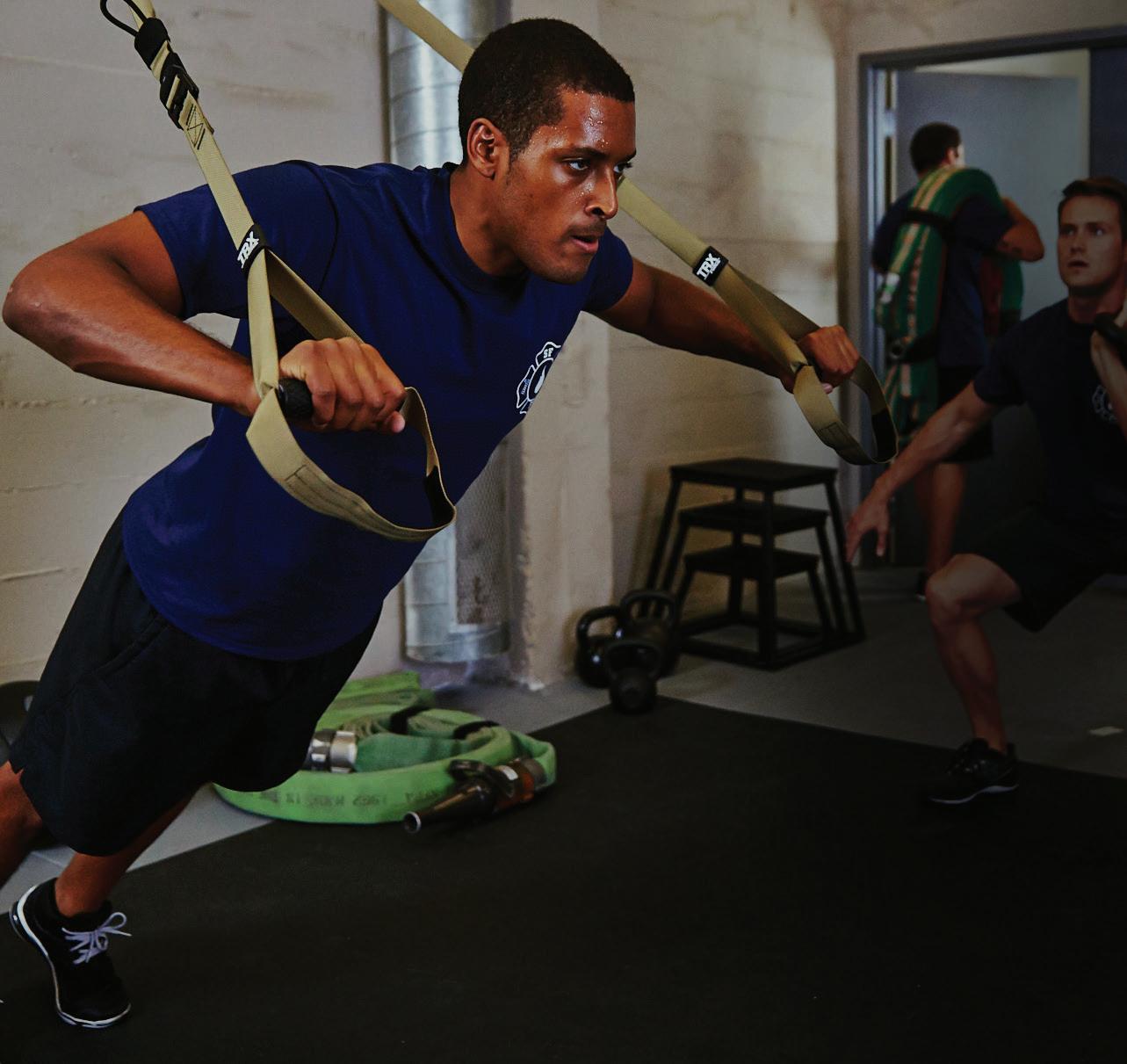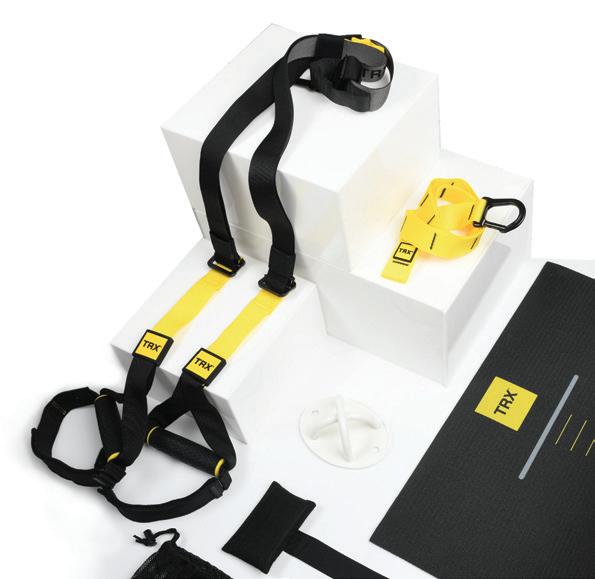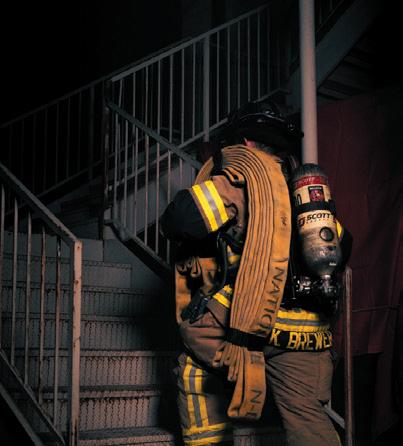
5 minute read
ARE YOU READY FOR THE FIREGROUND?
As a firefighter, you’re not only required to develop your tactical job skills but also the physical fitness that improves the efficiency of those skills.
Increasing your techniques for tasks at work will decrease the amount of effort required when you perform them in the field. Building your physical fitness level may allow you to perform the same tasks for a longer period and decrease the impact that each individual call has on overall strain per shift.
Today’s fire departments are not just employers: they are increasingly active in educating employees about fitness, wellness and nutrition. Tactical strength and conditioning instructors placed within agencies have the job of strategically programming physical fitness training to target the muscles, movement patterns, and energy systems of common fireground tasks.
To best prepare for these tasks, whether it’s for emergency calls or for passing physical ability tests, you need to prioritize exercises that have a higher carry-over to increase your job task performance.
Four specific tasks are commonly recognized in the firefighting community: forcible entry, victim drag, kneeling hose pull, and stair climb.
Since fireground tasks incorporate a large portion of posterior chains musculature (such as glutes, hamstrings, and back) and rotational power, we focus on these areas and share training exercises that can easily be built into your physical preparedness regimen to increase muscular development, strength, power, and endurance that will assist job task performance.
Each exercise here has a description you should have a look at before you do it, as well as cues to assist you to better understand the setup and execution of the exercise. In addition, each exercise has an alternative (working similar muscle groups and movement patterns); a regression (an easier exercise option); and a progression (a more advanced exercise option).
Improving Strength And Power Performance For Common Fireground Tasks
FORCIBLE ENTRY (STRIKE MAN)
INTENSITY: HIGH
INTENSITY: MODERATE COMPONENTS:
• Rotational power (core) – ability to transfer power in a rotational movement pattern to strike the Halligan tool.
• Upper body endurance – ability to strike the Halligan tool repetitively during forcible entry.
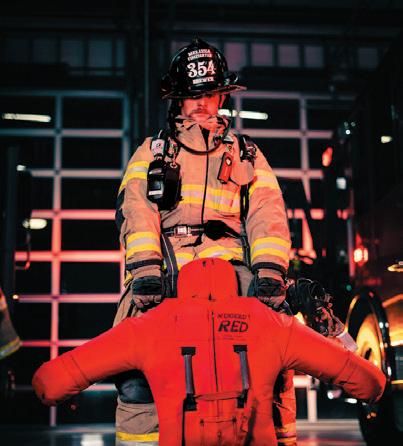
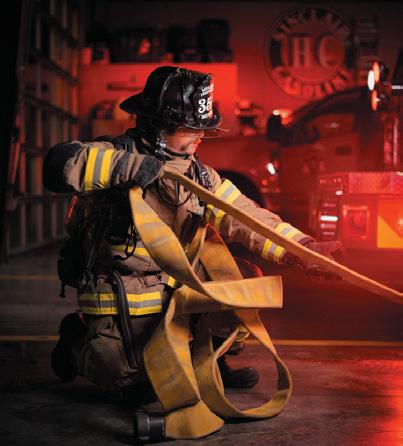
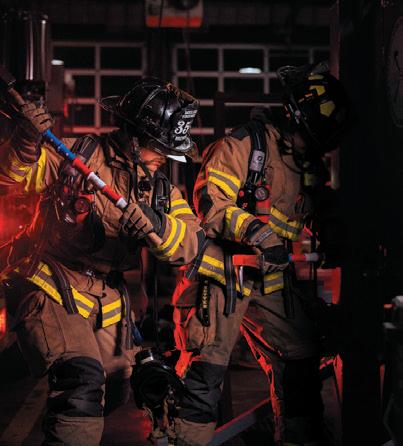
STAIR CLIMB (W/LOAD CARRIAGE)
COMPONENTS: COMPONENTS:
• Lower body strength – ability to lift and move victim.
• Lower body endurance – ability to transport victim for a greater distance.
KNEELING HOSE PULL
INTENSITY: MODERATE COMPONENTS:
• Lower body strength – ability to perform stair climb with additional load.
• Lower body endurance – ability to complete multiple flights of stairs.
• Core stability – ability to maintain upright position while carrying hose bundle.
INTENSITY: HIGH
• Upper body power – ability to pull sections of hose in a dynamic and explosive manner.
• Rotational power (core) – ability to rotate in a dynamic manner while pulling sections of hose.
Kettlebell Deadlift
ASSOCIATED TASKS: VICTIM DRAG & STAIR CLIMB
PREREQUISITE
Personnel should be able to demonstrate proper hinge mechanics, potentially developed through non-weighted glute bridge, body weight hinge, or even hinge with banded tension.
PRESET CUES
• Pull shoulders back; focus on keeping a flat back and chest out.
• Keep your chin tucked through the movement and do not look up.
• Core tight: focus on bracing your core by creating tension to support stability and structure.
DESCRIPTION
The deadlift, commonly known as the “king” of all the hinge movements, emphasizes posterior chain load. Although mostly seen as utilizing the standard barbell, the implementation of a kettlebell can be beyond beneficial for personnel new to working out or readdressing proficiency of movement patterns.
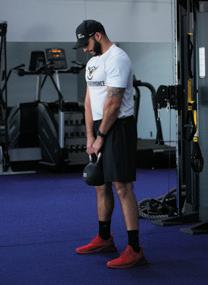
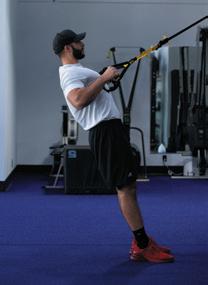
Inverted Rows
EXECUTION CUES
•“Knees” – Without squatting, slightly bend your knees to initiate the movement.
• “Sit” – push hips backwards, not straight down (think of sitting back into a chair).
• “Brace” – when you grip the kettlebell, emphasize drawing your shoulders backwards, tucking your upper arm into your lats; create tension in your core for support.
• “Hips” – while maintaining a flat back and tight core, drive your hips forwards to lift the weight.
• “Stand” – as you drive your hips forward, think of standing tall; do NOT extend into a lean.
ASSOCIATED TASKS: KNEELING HOSE PULL & VICTIM DRAG
PREREQUISITE
Due to the ability to manipulate the intensity/difficulty of this task based on body positioning, primary prerequisites could consist of grip strength or glute strength for maintaining posture through movement.
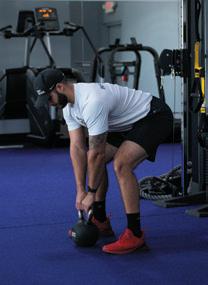
PRESET CUES
• Grip the handles or straps; take the slack out of the strap by walking outwards before initiating your lean.
• From a leaning position, adjust the difficulty based on your current fitness level and goals – traditionally, the more you lean, the higher the intensity/load.
• Engage your core while pushing your hips forwards – this helps keep your body in proper alignment during the movement.
DESCRIPTION
The inverted row is a full body movement that manipulates body weight to increase load and intensity of movement for developing musculature of the back. This musculature provides structural integrity for many fireground tasks.
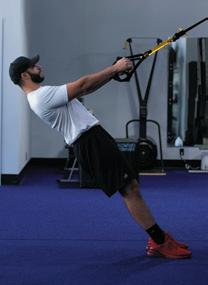
EXECUTION CUES
• Drive your elbows backwards – your body will start to rise with this movement.
• While pulling, keep your elbows either at 45 degrees from your side or tucked against your body.
• Toward the end of the movement, squeeze your shoulder blades together to fully contract your back muscles.
• Reverse the movement by slowly allowing your body to lower, stretching your back muscles and extending your arms in front of you.
• Make sure you maintain a straight body alignment even at the bottom of the descending motion.
WOOD CHOPPERS (WITH MEDICINE BALL)
ASSOCIATED TASKS: FORCIBLE ENTRY & KNEELING HOSE PULL
PREREQUISITE
Show efficient thoracic or upper spine/torso rotation in a controlled manner.
PRESET CUES
• Select a medicine ball of a weight that you can control in both a slow and dynamic movement – start light before increasing the load.
• Stand with your feet at hip width.
• You should have a slight bend in your hips at the start position.
EXECUTION CUES
• While grabbing the medicine ball with both hands, place it on the side of one hip.
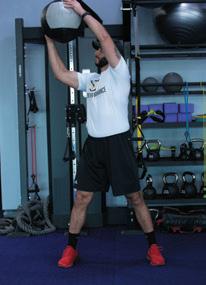
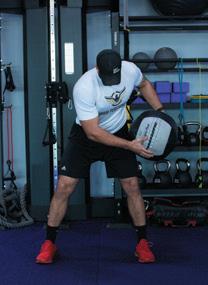
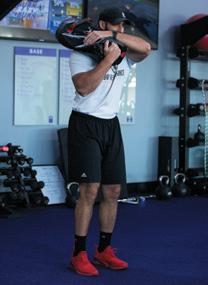
DESCRIPTION
The rotational nature of the wood chopper trains the core to twist with high-speed movement patterns. Training the core with dynamic rotational exercises will prepare the body to be explosive in a controlled manner during job tasks that require rotational power production.
REVERSE LUNGE (WITH SANDBAG)
• Begin to drive your hips forward (with a slight rotation) to generate power in your rotation
• As you drive your hips forward, rotate at the core while raising the medicine ball across your body over the opposing shoulder – your chest and torso should rotate and follow the motion of the ball.
• Rotate as your mobility allows, while ending the motion when the medicine ball is over that opposing shoulder.
PREREQUISITE
Personnel should be able to perform proper squatting mechanics to display a baseline of lower body strength prior to single limb movements. Personnel should also perform the movement efficiently without weight prior to adding any form of load carriage.
PRESET CUES
• Grasp, lift, and securely place the sandbag on one of your shoulders.
• Use one or both hands to maintain the sandbag positioning – might be determined based on weight of the bag and/or coordination.
• Keep your core engaged throughout the movement.
EXECUTION CUES
DESCRIPTION
The reverse lunge is a very underrated exercise that addresses overall lower body strength and stability through movement. Any offset of load carriage, such as holding a dumbbell or sandbag on one side, increases the dependence on core engagement.
• Shift your weight toward the leg opposing the sandbag – this will be your support leg.
• Initiate the movement by lifting and pushing back the leg that is on the same side of the sandbag into a reverse lunge.
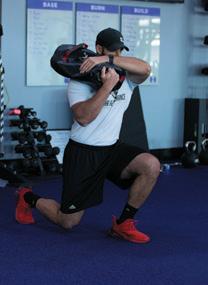
• Consciously focus on the placement of the back foot, and maintaining the stability of that ankle.
• Sink your hips downwards until your knees reach a 90 degree angle, or as far as you are comfortable.
• As you initiate lunging forwards into the starting position, drive the hips forward with the support leg – engaging the glutes.
• You can either place the foot of the moving leg beside the support leg on the ground or allow for the foot to hover over the ground to maintain the tension of the support leg.
GET YOUR ANNUAL FIREFIGHTER PHYSICAL.
You can’t rescue anyone if you don’t take care of yourself first. Getting your annual firefighter physical can help you be sure you’re there — to save others.

For more information, visit firstrespondercente r.org.
